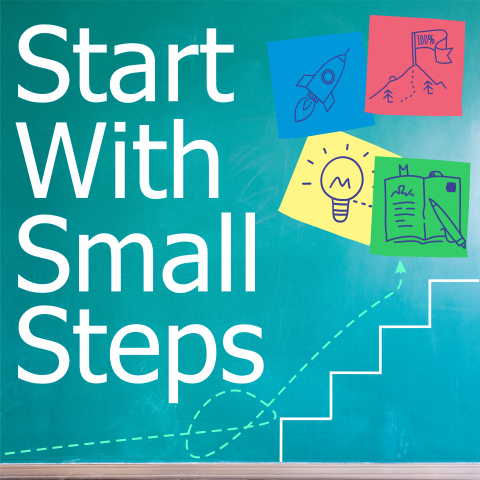The Power of Action: Why “Do It Until You True It” Beats “Fake It Till You Make It”
We’ve all heard the advice: “Fake it till you make it.” Whether in a job interview, a presentation, or even a social setting, the phrase encourages us to pretend we have it all together until, eventually, we do. But what if there’s a better way—one grounded in authenticity, deliberate practice, and personal growth? That’s where the idea of “Do it until you true it” comes in.
Rather than relying on appearances or bravado, this approach emphasizes real action, small steps, and meaningful experience. The focus shifts from performance to transformation, building lasting confidence and character along the way.
The Illusion of “Faking It”
The temptation to “fake it” often stems from the desire to be seen as capable—even if we’re not quite there yet. It’s a way of coping with imposter syndrome, fear, or insecurity. But there’s a danger here. When we fake competence without the foundation of experience or learning, we risk more than embarrassment. We risk damaging trust, our own credibility, and possibly harming others.
In high-stakes environments—like a hospital, sales pitch, or emergency response—bluffing your way through can have serious consequences. The truth is, pretending only takes you so far. Sooner or later, real knowledge and skills are required.
Confidence Through Repetition
“Do it until you true it” is about building true confidence from the ground up. The phrase invites us to take small, manageable actions that lead to authentic capability. It’s grounded in the idea that we are shaped by our behaviors.
As Aristotle famously said, “We are what we repeatedly do. Excellence, then, is not an act, but a habit.” This philosophy teaches that our identity is not fixed but can be molded through consistent effort.
For example, someone wanting to be calm in high-pressure situations won’t get there by simply saying “I’m calm” repeatedly. Instead, they practice breathing techniques, remain composed, and gradually train their nervous system to handle stress better.
Psychology Backs It Up
Behavioral psychology supports this mindset. Cognitive behavioral theory suggests that thoughts influence actions—but the reverse is also true. Changing your behavior can lead to new thought patterns and emotional responses.
Take athletes, for instance. A basketball player might use positive self-talk before a free throw, but without practice, those words are hollow. The confidence only sticks if it’s backed by hundreds of hours on the court.
Similarly, practicing generosity—even when you don’t feel generous—can nurture a truly generous spirit. By giving, you train yourself to become someone who gives. This is what “trueing” is all about.
Learning from Experience: A Personal Story
Imagine being 11 years old and witnessing a van flip over on the highway. What do you do? Jill, the narrator of this story, didn’t freeze. She grabbed a first aid kit and sprang into action, even without formal training. That moment could have ended in fear or regret—but it sparked a journey instead.
Rather than letting inexperience stop her, she used the event as motivation to learn more. She went on to take first aid classes, become a lifeguard, and eventually complete advanced medical training. Each experience built on the last, creating a scaffold of real-world knowledge. That’s not faking it—that’s earning it.
Practical Steps Toward True Confidence
Here’s the key takeaway: If you want to be something—calm, competent, generous, confident—start acting in ways that reflect that goal, even if it feels unnatural at first. These are a few ways to apply this:
- Want to be a better speaker? Join Toastmasters and start speaking regularly.
- Want to handle stress better? Practice mindfulness during small frustrations.
- Want to be more self-assured? Reflect on past successes, however small, and build from there.
- Want to lead? Volunteer for small leadership roles and observe how leaders behave.
These micro-actions build momentum. They don’t just change how others see you—they change how you see yourself.
The Risk of Dishonesty
The trouble with faking it is the lie we tell ourselves and others. Saying, “Yes, I know how to do that,” when we don’t, might win us a short-term reward—but it sets us up for long-term failure. Worse, it erodes trust. People might never ask us again. And internally, the gap between who we pretend to be and who we are widens, feeding anxiety and imposter syndrome.
Instead, honesty is empowering. Saying, “I’ve done parts of this before, and I’m eager to learn the rest,” builds credibility. You position yourself as competent and trustworthy—someone willing to grow.
Scaffolding for Success
Confidence built on small victories is much stronger than any façade. Every step taken is like a brick in the foundation of self-efficacy. Psychologist Albert Bandura emphasized this: true self-belief arises from experience, not affirmations alone.
Even failure becomes fuel. When a mistake happens, ask: what did I learn, and what’s my next step? That’s how lasting growth happens—not from pretending to be something you’re not, but from building the person you want to become, action by action.
Conclusion: You’ve Got This—For Real
In a world that often celebrates appearance over substance, “Do it until you true it” is a refreshing, grounded alternative. It reminds us that character, confidence, and competence are not traits you’re born with. They’re habits you build—one small step at a time.
So, the next time you feel pressure to fake your way forward, pause and ask: what’s the honest next step I can take? Then take it. The growth, the confidence, the calm—it’s all waiting for you on the other side of action.

